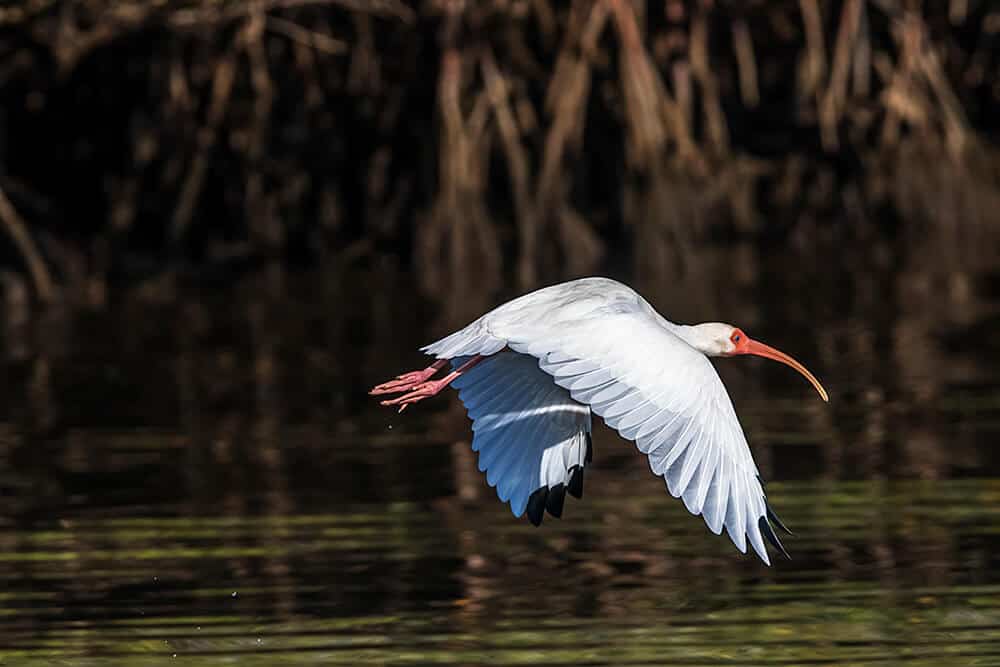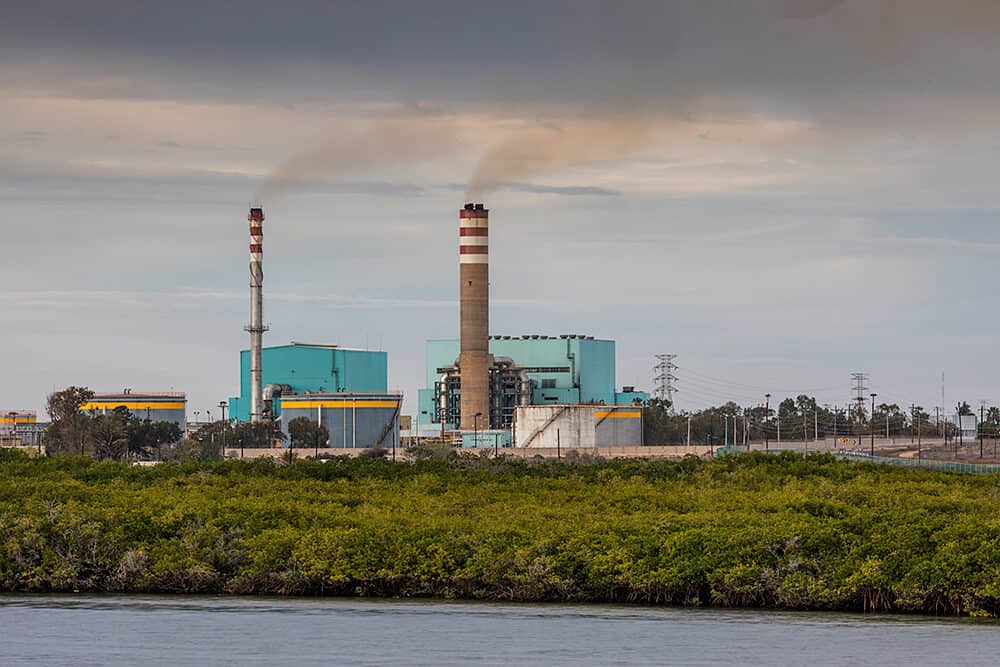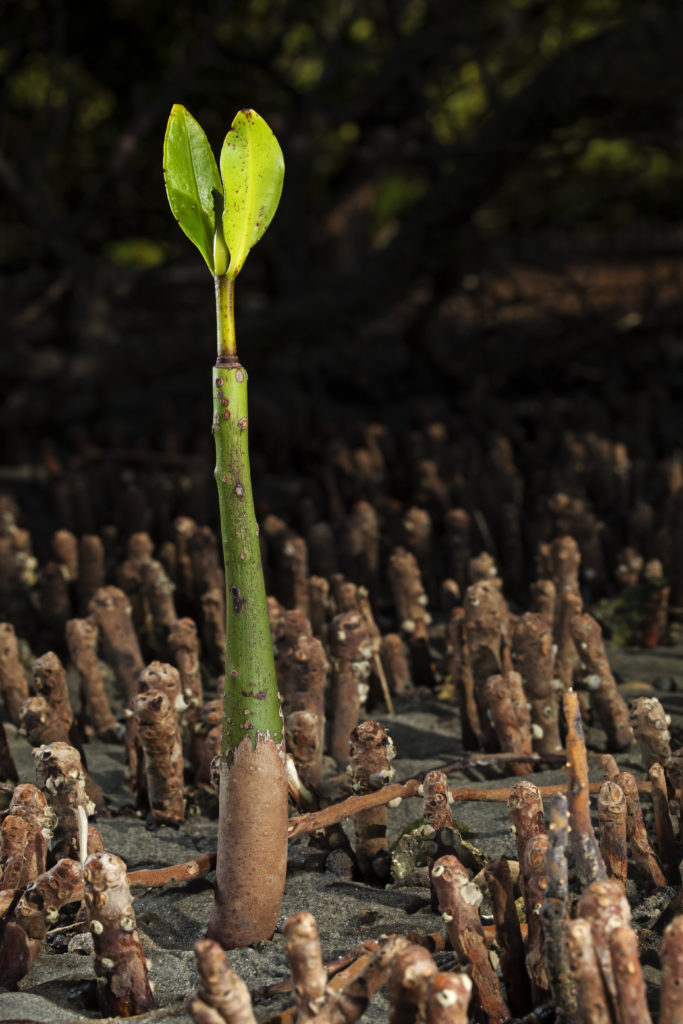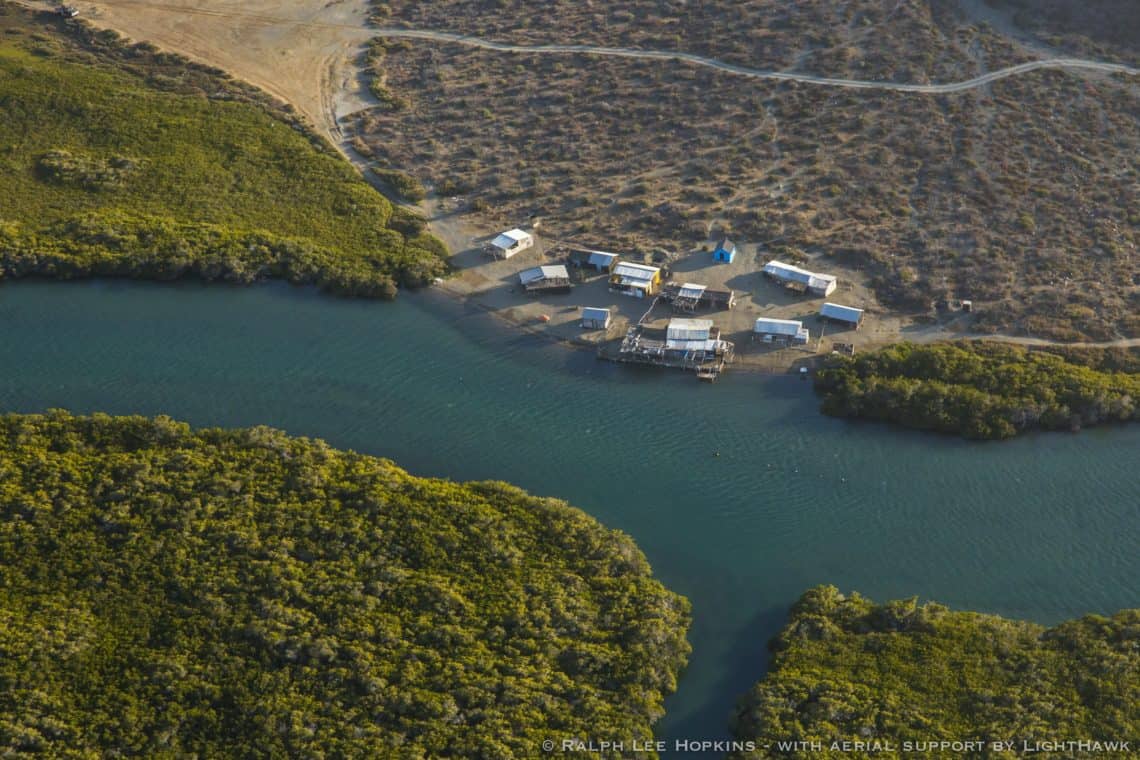By Eduardo Nájera Hillman, WILDCOAST/COSTASALVAJE Mexico Director and Fernanda Adame Vivanco, Griffith University

The 187,383 ha of mangroves along the Pacific Coast of the Baja California Peninsula and in the Gulf of California account for 24% of the mangroves in Mexico. These ecosystems provide essential habitat for resident and migratory birds, marine mammals, sea turtles and many other wildlife species that complete critical stages of their lifecycles in surrounding waters. Mangrove-related fisheries in the Gulf of California contribute approximately $37,500 USD per hectare/year and offer important opportunities for climate change adaptation and mitigation, including atmospheric carbon intake, livelihood support, food security and storm and flood protection. However, there appears to be high opportunity costs associated with conserving mangroves because of other uses of mangrove areas. For instance, aquaculture, agriculture, tourism and port infrastructure expansions are often more profitable in the short-term; in the last 40 years Mexico has lost 9% of its mangrove forest cover.

Moreover, climate change and related sea-level rise are increasing threats to existing coastal resources, infrastructure and communities. Helping governments as well as communities plan for and adapt to changing climate patterns needs a strategy that focuses on the importance of preserving coastal ecosystems, such as mangrove forests. Mangrove conservation is a first line of defense to mitigate for and adapt to climate change impacts.
Recent research has demonstrated that avoiding the deforestation and degradation of mangrove forests in Mexico could prevent cumulative emission of at least 32.8 million tons of CO2 between now and 2030. Although mangroves occupy just 1.2% of Mexico’s forests, their conservation would contribute to reducing 6-10% of the country’s emissions from land-use changes by 2030.

WILDCOAST’s Blue Carbon Project is a collaborative effort in Mexico that seeks to protect a total of 33,891 ha of mangroves in the Gulf of California. The protection comes from an innovative partnership with Mexico’s Ministry for the Environment (SEMARNAT) to establish federal conservation concessions for mangrove areas, known as “acuerdos de destino”. The concessions are granted to the National Commission for Protected Areas (CONANP), through applications that encompass detailed mapping, photographic archives, municipalities agreement for the concessions, and background ecological information to demonstrate the ecological value of the selected areas. Today, there are approved concessions for 3,661 ha of mangrove ecosystems, and applications are submitted for another 26,569 ha. These have gone through technical review by SEMARNAT as well as amendments by the collaborative team of CONANP-WILDCOAST, and are now just pending legal review by SEMARNAT to be approved.
Additionally, WILDCOAST has formalized a partnership with Australia’s Griffith University, to estimate the emissions that will be avoided by protecting these mangroves from degradation and/or deforestation. Together we have embarked in the certification process to generate carbon credits from mangrove conservation to offset carbon emissions elsewhere. The goal is to sell these carbon credits in the voluntary market to produce alternative financial resources that will be invested in the conservation of these same mangroves. We aim to create a mangrove conservation fund that will be accessible to local communities, fishing coops, non-profit organizations and other stakeholders to combat threats to mangroves, as well as to secure a resilient coastline to help protect communities, economies and ecosystems from climate change impacts.
To learn more about WILDCOAST and our many projects, visit our website.

